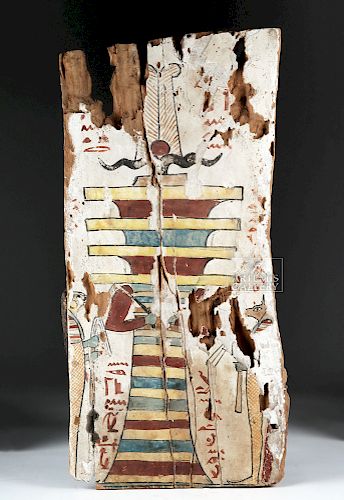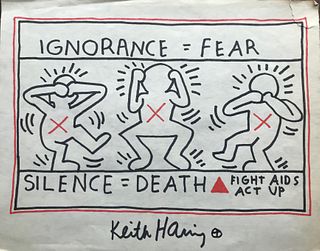Egyptian Wooden Sarcophagus Panel - Djed, Anubis, Horus
Lot 61d
About Seller
Artemis Fine Arts
686 S Taylor Ave, Ste 106
Louisville, CO 80027
United States
Selling antiquities, ancient and ethnographic art online since 1993, Artemis Gallery specializes in Classical Antiquities (Egyptian, Greek, Roman, Near Eastern), Asian, Pre-Columbian, African / Tribal / Oceanographic art. Our extensive inventory includes pottery, stone, metal, wood, glass and textil...Read more
Categories
Estimate:
$2,500 - $3,500
Absentee vs Live bid
Two ways to bid:
- Leave a max absentee bid and the platform will bid on your behalf up to your maximum bid during the live auction.
- Bid live during the auction and your bids will be submitted real-time to the auctioneer.
Bid Increments
| Price | Bid Increment |
|---|---|
| $0 | $25 |
| $300 | $50 |
| $1,000 | $100 |
| $2,000 | $250 |
| $5,000 | $500 |
| $10,000 | $1,000 |
| $20,000 | $2,500 |
| $50,000 | $5,000 |
| $100,000 | $10,000 |
| $200,000 | $20,000 |
About Auction
By Artemis Fine Arts
May 10, 2018
Set Reminder
2018-05-10 10:00:00
2018-05-10 10:00:00
America/New_York
Bidsquare
Bidsquare : Fine Ethnographic / Asian / Ancient Art
https://www.bidsquare.com/auctions/artemis-gallery/fine-ethnographic-asian-ancient-art-3213
Featuring antiquities from around the world including Pre-Columbian, Tribal, Classical, Asian, so much more! Artemis Fine Arts info@artemisfinearts.com
Featuring antiquities from around the world including Pre-Columbian, Tribal, Classical, Asian, so much more! Artemis Fine Arts info@artemisfinearts.com
- Lot Description
Ancient Egypt, Late Period, 26th to 31st Dynasty, ca. 664 to 332 BCE. A bright polychrome wooden panel with a progression of symbolic items, hieroglyphs, and gods that have been painted onto it using wooden bundle brushes. The center of the panel features a large djed pillar, its surface consisting of bands of yellow, red, green, and blue, topped by the Atef crown, with two curling ostrich feathers, one on either side, symbol of Upper Egypt and Osiris's cult. The Djed Pillar was commonly placed as an amulet near the spine of a mummy, and is listed in the Book of the Dead as part of a spell which can be used to allow a mummy to sit up, resurrected. It is associated with Osiris, representing his spine, and is one of the oldest symbols in Egyptian mythology. The pillar is flanked by Anubis and Horus, with lines of hieroglyphs - prayers to Osiris for protection of the dead - separating the gods from the massive pillar. Size: 12.55" W x 27" H (31.9 cm x 68.6 cm)
This was a panel on a sarcophagus. By the time of the Late Dynastic period, the elaborate funerary rituals and furniture of the Egyptian grave had become an industry, mass produced, given to, for the first time, the non-elite. While in some regards, this signaled a decline in these religious practices and a simplification of motifs and artwork, it was also a democratization of death, opening up access to certain privileged religious rituals - and the promise of an eternal afterlife - to many more members of the society.
Provenance: private Davis collection, Houston, Texas, USA
All items legal to buy/sell under U.S. Statute covering cultural patrimony Code 2600, CHAPTER 14, and are guaranteed to be as described or your money back.
A Certificate of Authenticity will accompany all winning bids.
We ship worldwide and handle all shipping in-house for your convenience.
#132931Inactive insect damage on the surface, especially at the top and low on the right (facing). Large fissure down the center. Nice remaining pigment on the surface, with clear motifs.Condition
- Shipping Info
-
All shipping is handled in-house for your convenience. Your invoice from Artemis Gallery will include shipping calculation instructions. If in doubt, please inquire BEFORE bidding for estimated shipping costs for individual items.
-
- Buyer's Premium



 EUR
EUR CAD
CAD AUD
AUD GBP
GBP MXN
MXN HKD
HKD CNY
CNY MYR
MYR SEK
SEK SGD
SGD CHF
CHF THB
THB
















